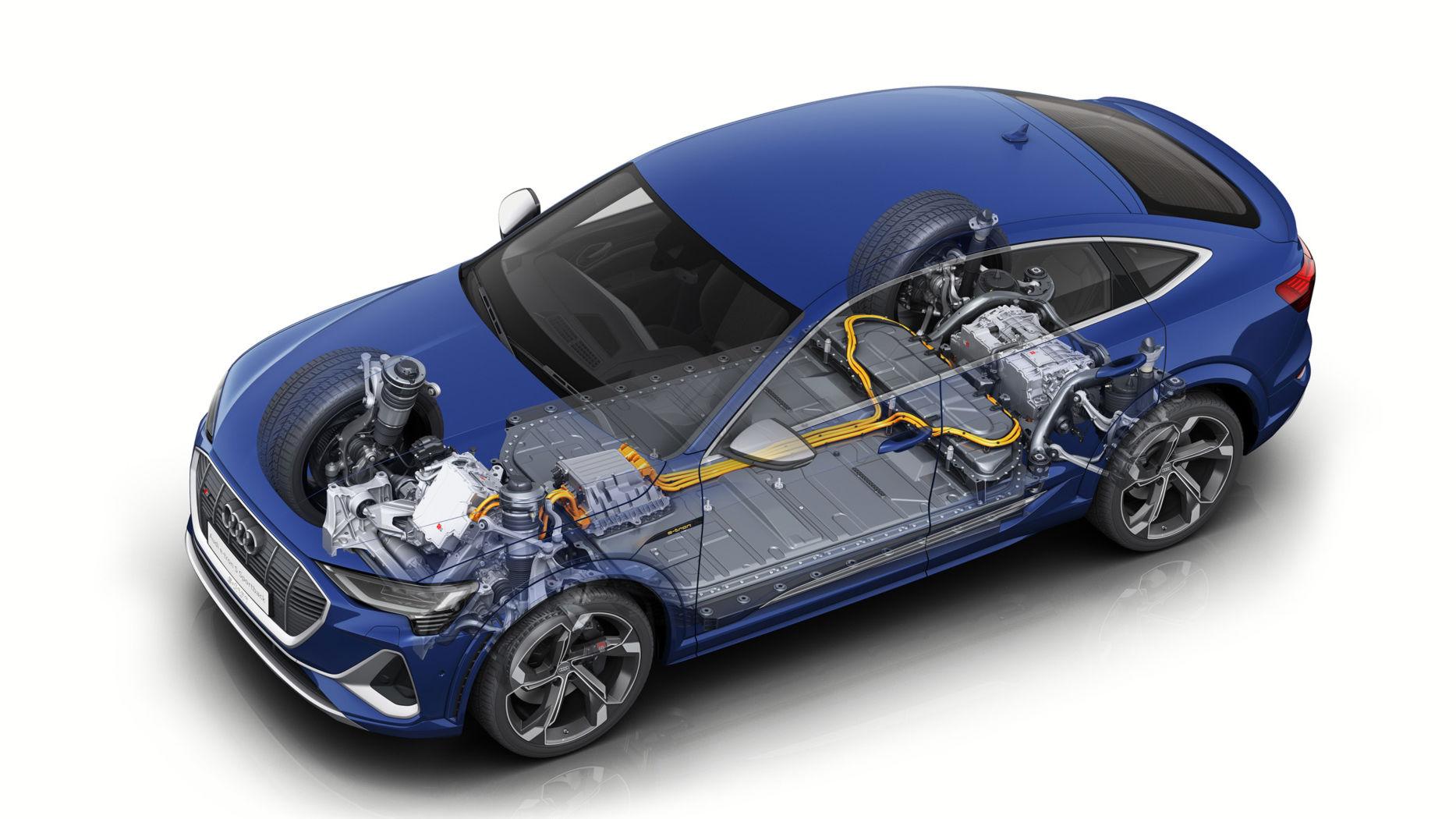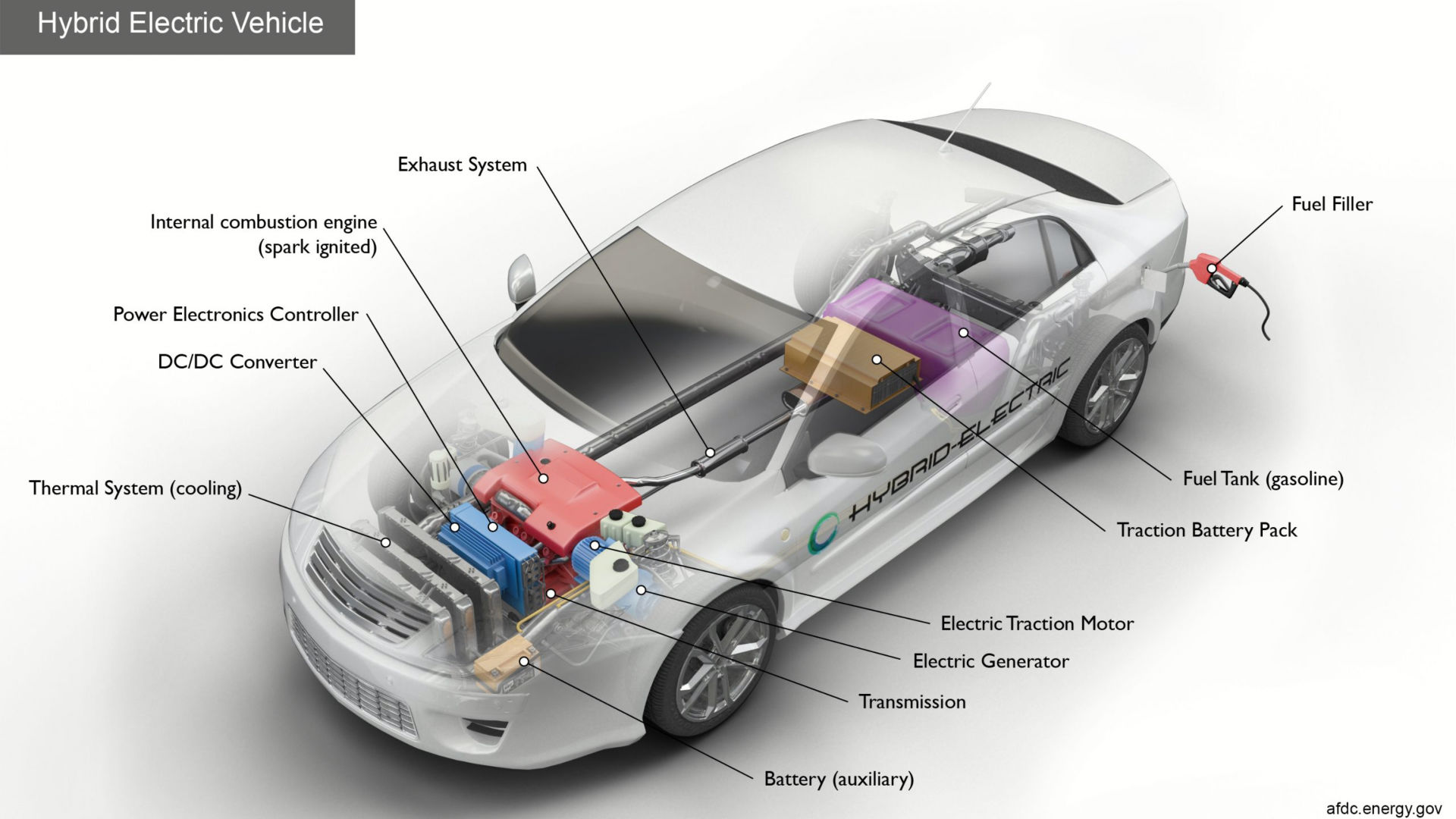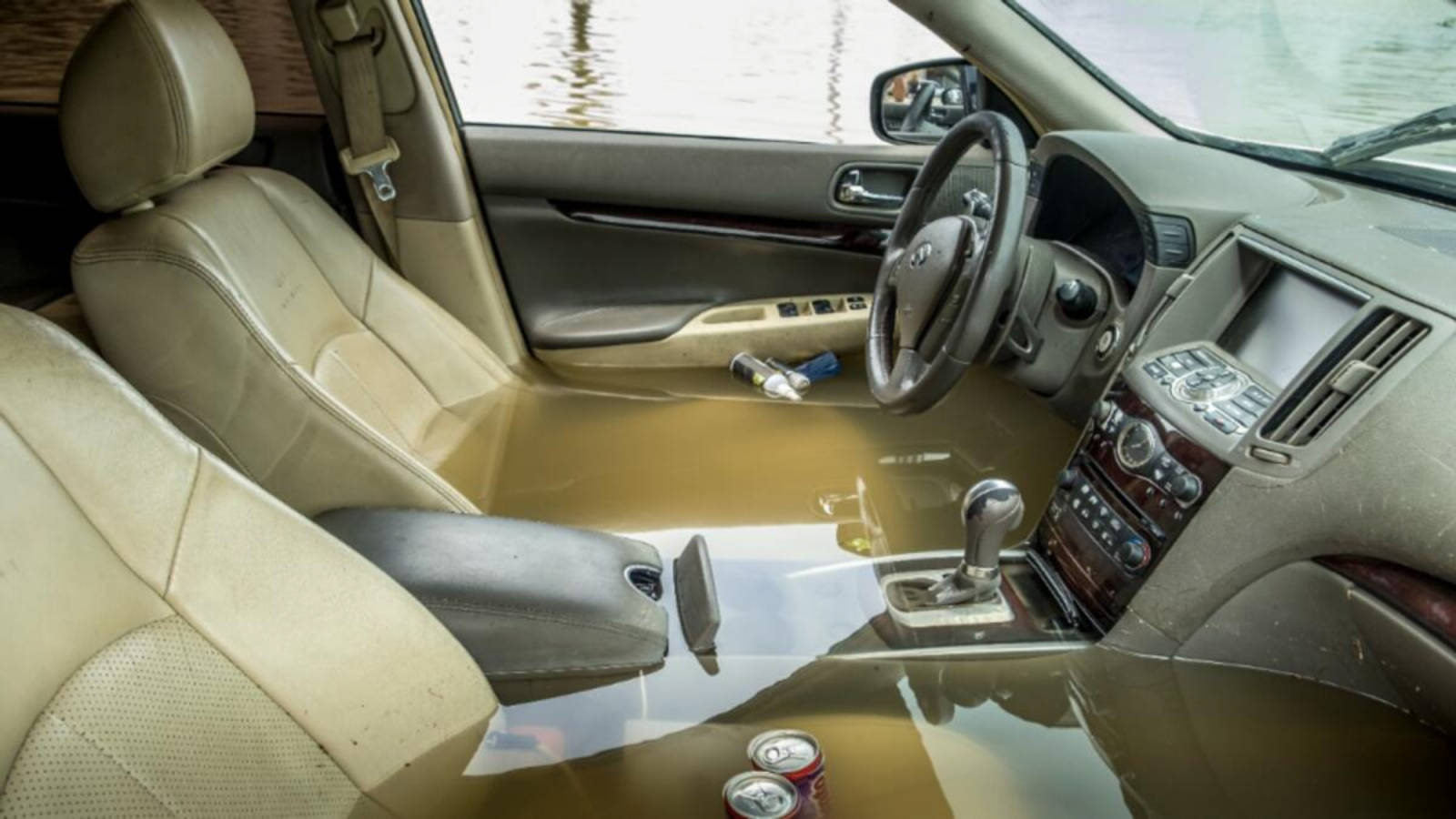Get To Know Your Car Better: A Detailed Guide To Automotive Terms — Drivetrain

A car’s drivetrain is the essential mechanical system that transfers the power from the engine to the wheels, enabling the vehicle to move. This intricate system includes key components like the driveshaft, differential, and axles. Without a drivetrain, the engine’s power is of no use in a vehicle.
Before we discuss the drivetrain any further, in our previous edition of the Guide To Automotive Terms series, we spoke about gearbox/transmission in a car. Also, we have a beginner’s guide to automotive terms to help you understand your car better. Onwards to the drivetrain.

Why Is A Drivetrain Needed?
The engine generates power, which the transmission adjusts for speed and torque, and this power then flows through the drivetrain. A car’s drivetrain is crucial for several key reasons:
- Power Transmission: It transfers the engine’s power to the wheels, enabling the car to move.
- Speed Control: Through the transmission, it adjusts speed and torque, ensuring optimal performance in various driving conditions.
- Directional Control: It allows the car to move both forward and backwards by providing power to the wheels accordingly.
- Turning Ability: Components like the differential enable smooth turns, enhancing stability and control.
- Traction and Handling: Different drivetrain types (front-wheel drive, rear-wheel drive, all-wheel drive) affect traction and handling, offering versatility for different situations.
The drivetrain is the car’s core, converting engine power into motion, controlling speed and direction, and adapting to diverse driving scenarios for safe and efficient transportation.

What Is The Difference Between A Powertrain & Drivetrain?
The terms “powertrain” and “drivetrain” are often used interchangeably, but they refer to slightly different aspects of a vehicle’s mechanical system:
Powertrain:
- The powertrain encompasses all the components responsible for generating and delivering power to move the vehicle.
- It includes the engine, transmission, and sometimes other components like the driveshaft, and clutch.
- Essentially, the powertrain starts with the engine and ends with the transmission, which controls the engine’s power output.
Drivetrain:
- The drivetrain is a subset of the powertrain and focuses specifically on the components that transmit power from the transmission to the vehicle’s wheels.
- It includes the transmission, driveshaft, differential, and axles.
- The drivetrain’s primary function is to transfer the engine’s power to the wheels, allowing the vehicle to move and control its speed and direction.

History Of Drivetrains In Cars
Early cars, like Mercedes-Benz and Ford, featured rear-wheel drive and were powered by internal combustion engines, marking the birth of the automotive industry. However, the trend for Front-wheel drive cars started in the early 20th Century with the Cord L-29 in 1929. However, front-wheel-drive cars were less common than rear-wheel-drive cars.
Moving to the Mid-20th Century, because of World War II, Four-wheel drive (4WD) and all-wheel drive (AWD) drivetrains were introduced initially in military vehicles and later in civilian vehicles. These systems significantly improved traction and stability, making them popular choices for off-road vehicles, trucks, and sports cars.
In the late 20th Century Front-wheel drive (FWD) became the dominant drivetrain layout for passenger cars. This shift was primarily driven by factors such as improved fuel efficiency, and better space utilization. But most of all, FWD cars were cheaper to manufacture than RWD or 4WD cars. They still are!

At the same time, All-Wheel Drive cars experienced a resurgence in popularity. Apart from SUVs, regular vehicles also prefer AWD because of its ability to provide enhanced traction on slippery surfaces and improved handling in various conditions. One such famous drivetrain is Audi’s Quattro, which put the AWD system on the map.
In the present era of electric and hybrid vehicles, we are witnessing entirely new drivetrain configurations. The changes to the drivetrain mostly happen to the gearbox rather than the entire drivetrain itself. However, instead of mechanical linkages, cars have started to use electrical links for more independent wheel control.
What Are Different Components In A Drivetrain?
Here are the key components of a typical drivetrain:
- Driveshaft: Connects transmission to the differential, transmitting power to the axles.
- Differential: Splits power to the wheels and enables smooth turning by allowing them to rotate at different speeds.
- Axles: They connect the differential to the wheels, transferring power to drive the vehicle.
- Transfer Case (4WD and AWD): Distributes power to both front and rear axles, enhancing traction in challenging conditions.
- Final Drive (Differential Ratio): Determines power split between wheels, affecting acceleration, top speed, and efficiency.
- CV Joints: Facilitate flexible power transmission at the axle ends, crucial for front-wheel and all-wheel-drive vehicles.
- Clutch: Engages/disengages engine power for gear changes in manual transmissions and automatic transmission cars.
- Torque Converter: In an automatic transmission, the torque converter replaces the clutch to allow smooth gear transitions and power transfer.
All the above components in a drivetrain and some in the powertrain use metal for construction. However, on performance cars, these components are made up of lighter composite materials such as carbon fibre.

What Are The Different Types Of Drivetrains?
There are several different types of drivetrains used in vehicles, each with its advantages and characteristics. The choice of drivetrain depends on factors like vehicle type, intended use, and driver preferences. Here are the main types of drivetrains:
Front-Wheel Drive (FWD):
Example: Kia Sportage
- In a front-wheel-drive system, the engine’s power is primarily sent to the front wheels.
- Advantages include good traction in most road conditions, space-efficient interior layouts, generally better fuel efficiency and cheap to manufacture.
- Common in compact cars, sedans, and many crossover SUVs.
Read our DubiCars CarSpotlight series featuring the Kia Sportage to know more about this compact SUV.
Rear-Wheel Drive (RWD):
Example: BMW M3
- Rear-wheel drive sends power to the rear wheels.
- Advantages include balanced weight distribution, better handling characteristics, and a traditional setup preferred by performance and sports car enthusiasts.
- Often found in larger sedans, sports cars, and trucks.
Read the accidental history of the BMW M3 and its racing pedigree here.

All-Wheel Drive (AWD):
Example: Audi A8
- All-wheel drive systems distribute power to both the front and rear wheels, and sometimes to all four wheels simultaneously.
- Advantages include improved traction in slippery conditions (rain, snow, off-road), better stability, and enhanced performance.
- Common in SUVs, crossovers, and performance cars. Some AWD systems are full-time, while others can be engaged or disengaged as needed.
Audi’s another stunner, the RS6 Avant is our pick for the DubiCars Exotic Car Of The Week series.
Four-Wheel Drive (4WD):
Example: Toyota Land Cruiser 300
- Four-wheel drive sends power to all four wheels simultaneously and is typically designed for off-road and rugged terrain use.
- Advantages include superior off-road capability, enhanced traction in challenging conditions, and the ability to switch between 2WD and 4WD modes.
- Common in trucks, SUVs, and off-road vehicles.
Read the famed history of the Toyota Land Cruiser and all its generation details in this linked article.
Part-Time 4WD:
Example: Nissan Patrol Super Safari
- Part-time 4WD systems allow the driver to manually engage or disengage the 4WD mode as needed for off-road or low-traction situations.
- Often found in off-road vehicles and trucks.
We have done a detailed comparison between the Toyota Land Cruiser and the Nissan Patrol on our DubiCompare series.
Electric Drivetrain (EV):
Example: Tesla Model 3
- Electric vehicles (EVs) use electric motors and batteries to drive the wheels.
- The electric motor’s output shaft is connected to the axles, which, in turn, rotate the wheels. This rotation of the wheels propels the vehicle forward.
- Electric cars have fewer moving parts as compared to a traditional ICE vehicle resulting in lower mechanical losses in transmitting the power.
- EVs come in various configurations, such as front-wheel drive, rear-wheel drive, or all-wheel drive, depending on the design of the vehicle.

Tesla has recently updated the Model 3 with a new design, features and improved range.
Hybrid Drivetrain (HEV and PHEV):
Example: Lexus RX 450
- The power transmission in hybrids can be more complex due to the combination of an internal combustion engine (ICE) and an electric motor.
- Since electric motors ultimately drive the wheels, the drivetrain is similar to an electric vehicle.
- The complications will lie in the transmission/gearbox to combine the power from the engine and the motor.
The Lexus RX450 is now available with a plug-in hybrid electric powertrain.
These are the main types of drivetrains used in vehicles today, and some vehicles may combine elements of different drivetrain types for specific purposes, such as hybrid systems or electric all-wheel drive. The choice of drivetrain depends on the vehicle’s intended use, efficiency goals, and desired performance characteristics.
Full-Time Four-Wheel Drive Vs Part-Time Four-Wheel Drive Vs All-Wheel Drive
Full-Time Four-Wheel Drive:
- Full-time 4WD, also known as permanent 4WD, is designed to provide power to all four wheels at all times.
- It typically has a centre differential, allowing for power distribution between the front and rear axles to accommodate differences in wheel speed when turning on dry or paved surfaces.
- Full-time 4WD is commonly found in off-road and utility vehicles, such as trucks and SUVs, where consistent traction on various terrains is essential.
- It can be used in both on-road and off-road conditions, offering the driver control over when to engage 4WD.

Part-Time Four-Wheel Drive:
- Part-time 4WD is a system that allows the driver to manually engage or disengage all four wheels for power delivery.
- Typically, part-time 4WD systems are rear-wheel-drive vehicles that can be switched into 4WD mode when additional traction is needed, such as in off-road situations or on slippery surfaces.
- Part-time 4WD should only be engaged when necessary, as driving in 4WD mode on dry or high-traction surfaces can cause drivetrain strain and wear.
All-Wheel Drive:
- AWD is a drivetrain system that automatically distributes power to all four wheels based on the vehicle’s traction needs without any driver intervention.
- Unlike 4WD systems, AWD vehicles don’t typically have a transfer case with a low-range setting for off-roading.
- AWD is commonly found in a wide range of vehicles, including sedans, crossovers, and some sports cars, to improve traction and stability on various road conditions, such as rain, snow, and dry pavement.
- Some AWD systems can send more power to either the front or rear wheels based on the situation, providing a degree of adaptability.
There is your complete guide on the drivetrain in a car. We will be posting detailed blogs on other components of a car. Keep an eye on the DubiCars Blog section for more such guides.
Looking to own a car? Here is a list of used cars on sale in the UAE and new cars on sale in the UAE.








